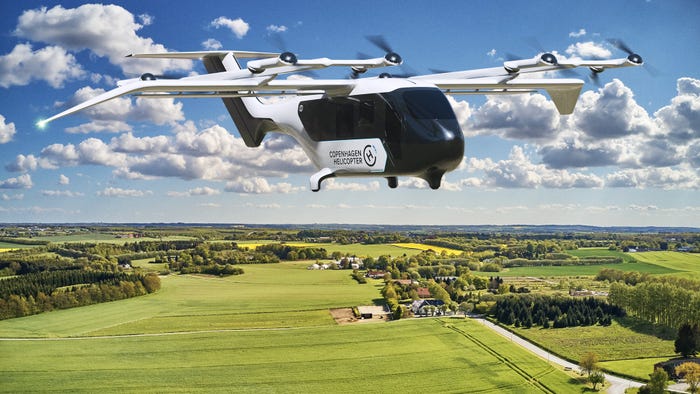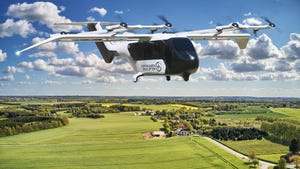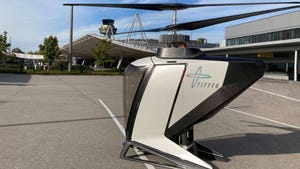Smart Hardware and Your Data CenterSmart Hardware and Your Data Center
Your enterprise's data center will likely benefit from smart hardware, but only if you adequately plan for its deployment.
June 11, 2020

By Bill Kleyman
Key takeaways from this article:
Smart hardware is redefining how data centers are managed as well as the kinds of user experiences IT departments provide.
Smart hardware can enable many capabilities for remote monitoring of data center capabilities and new data-intensive experiences.
Smart hardware requires extensive planning of your IT environment, from architecture to security to in-house knowledge, to gain ROI.
How Smart Hardware Has Changed
As data volumes and our expectations for data-rich experiences mount, the hopes for intelligent, flexible hardware have grown. For Internet of Things devices using edge computing architectures, more capable hardware has become an important next frontier. The question is how close is hardware to meeting elevated requirements for low latency and speedy data transport.
The need for more powerful hardware is vital as data volumes explode. According to one estimate, some 44 zettabytes of data will be created daily in 2020. With 5G, proliferating connected devices, and edge and cloud computing technologies, this data will enable organizations to leverage information unlike ever before.
As a result, the IoT market is predicted to continue to grow. International Data Corporation (IDC) estimates that there will be 41.6 billion connected IoT devices, or “things,” generating 79.4 zettabytes of data in 2025.
[IoT World, North America’s largest IoT event, is going virtual August 11-13 with a three-day virtual experience putting IoT, AI, 5G and edge into action across industry verticals. Register today]
But over the past several years, IoT devices have been constrained by, among other factors, the limitations of hardware. Often dubbed “dumb hardware,” IoT sensors and other connected devices have been limited by hardware that isn’t easily programmable. Further, heterogeneous pieces of hardware often require repeated point-to-point integrations, thereby complicating management and the overall ecosystem. Another challenge is those legacy IoT sensors that couldn’t really integrate well together would require manual operations. Some developments, however, have made that hardware more flexible.
New technologies with built-in smart hardware allow for autonomous efficiency that benefits both customers and data center operators. A system of connected devices from an air-handling unit all the way to the vents and fans can be automated. So, if there is a temperature reading that’s off, or any other threshold is exceeded, an air vent can open up to cool down a specific row, aisle, rack or even computing unit.
This is done without human interaction, which enables IT to handle more strategic tasks while reducing human error. At the same time, these systems need to be configured correctly to invite that beneficial automation. Although these systems are smarter and easier to deploy, the correct infrastructure in place to support it. This includes people, processes, and management.
Injecting Intelligence Into Digital Modernization
Data and platform intelligence are driving factors in the market today. Another IDC report indicated that global spending on the technologies and services that enable digital transformation (DX) of business practices, products and organizations is forecast to reach $2.3 trillion in 2023.
Worldwide DX technology investments will total more than $7.4 trillion over the next four years, according to Eileen Smith, program vice president of IDC’s Customer Insights and Analysis Group.
From a hardware perspective, what’s driving all of this modernization? It’s actually in the hardware — autonomous hardware-driven operations, robotic and robotic manufacturing, hardware-based root-cause analytics and so on. We’re not just applying intelligence to the data we derive, we see it in the hardware we’re building as well.
The Living Data Center
Advanced infrastructure requires advanced management technologies. As an example, one hyperscale organization has deployed a monitored data center with intelligent hardware. The software and hardware work in unison to monitor a data center’s macro and micro-environments for each customer and sector.
Information is carefully ingested, secured and then delivered to operations personnel and customers. In this scenario, thousands of sensors are deployed at each facility, the data center. From there, the management portals dynamically update and display information from intelligent hardware components. The hardware is built intelligently from the start.
This new hardware, like air handlers, water return systems, power units, fans, rack and aisle control systems, and more are designed with intelligence built in. This is different from legacy hardware that required smart components to be integrated into the technology to generate valuable information. Basically, living data center technologies have intelligence built in, not bolted on.
Microgrids provide an example as well. Microgrids are self-sufficient energy systems that can serve discrete geographic footprints. The difference is that the microgrid controller — the central brain of the system — can autonomously orchestrate the use of generators, batteries and nearby building energy management systems with a high degree of sophistication. This controller is capable of managing a customers’ energy requirements by optimizing the resources under its management.
Many data center and critical infrastructure manufacturers deliver hardware that is smart right off the manufacturing floor.
To integrate and make this data useful, however, is a whole other challenge.
The Problem With Being Too Smart
Edge computing is a significant factor in delivering smart hardware. Over the next few years, you’ll see more edge deployments to bring data closer to the source. Like living data centers, however, the edge is poised to become a lot smart — with some caveats.
Ever hear of something called ‘virtual machine sprawl?’ That is when you have too many virtual machines, and you don’t know where they are or who is managing them. Well, the same thing can happen with data and smart devices.
‘Smart sprawl’ is an issue for companies that strived for data intelligence without a real plan. Now, they have segmented projects, heterogeneous data ingestion systems, smart-initiatives-turned-pet-projects. It’s difficult to regain control or bring these systems together.
But smart hardware poses some challenges that data center environments need to address:
COVID-19 and managing a growing supply chain. The cloud, the internet and the underlying infrastructure have become more critical than ever. So, with more users and more hardware, you need more advanced infrastructure to support it all.
A part of your strategy may be a connected edge device. To have fewer management points, you might use new smart hardware. But you need to validate your supply chain. Your incredible solution can quickly come falling to the ground if it takes three weeks to get a critical part. Today’s market has tested critical infrastructure and its supply chains. So ensure that you partner with the right organizations to support intelligent hardware solutions.
The staffing problem. According to a recent AFCOM State of the Data Center report, most respondents (77%) reported difficulties in recruiting personnel, often data center facility techs, engineers and operators (34%), and cloud architects (31%).
Smart hardware thus requires those who can support it. Certainly, many data center operations can now be completed remotely and at the edge, which requires fewer people on-site. Smart hardware, however, will require training and new processes. The AFCOM report later showed us that virtually all respondents (92%) believe at least some training opportunities are necessary if organizations are to achieve IT service goals and keep good staff engaged. Don’t get too smart before your people can catch up.
Complexity and confusion. When you bring in new technology, you don’t want to introduce complexity, fragmentation and confusion into the environment. Poor communication, misaligned project goals or overzealous staff members create issues down the road. Even with the best intentions, smart hardware can become a management and cost burden. Plan out your infrastructure, especially if more intelligent solutions are involved. Executed correctly, smart hardware can bring value.
Security and data management. Mismanagement in smart hardware will create security holes. If you’re deploying any intelligent hardware, you might need to implement better network access controls (NAC) to lock down identity and access management (IAM), and change the way the network controls traffic with a virtual local area network (VLAN), and ensure that some systems never see public-facing connections (air-gapping). You can also deploy intrusion detection and intrusion prevention technologies as well as prevent data loss or leakage by analyzing data strings and patterns. As smart as your hardware is, you need a smarter security architecture.
The Power of Data and the Underlying Intelligent Hardware
There’s a particular draw toward deploying smart hardware. People want to be more productive.
But companies that plan to use smart hardware technologies should answer these questions first:
What does business need today? What about the near future?
Can you support smart hardware with infrastructure and with existing staff?
Do you have the right partners?
What is the cost of this hardware, and what is its expected ROI?
Do you have business and executive buy-in?
Have you validated your architecture?
How will you ingest use, and secure the data?
This is a short list. Your context and reasons for deploying intelligent hardware may be more extensive.
Plan your environment, get the right buy-in, and, quite simply, be smart in securing and architecting your IT environment.
You May Also Like
.jpg?width=700&auto=webp&quality=80&disable=upscale)





